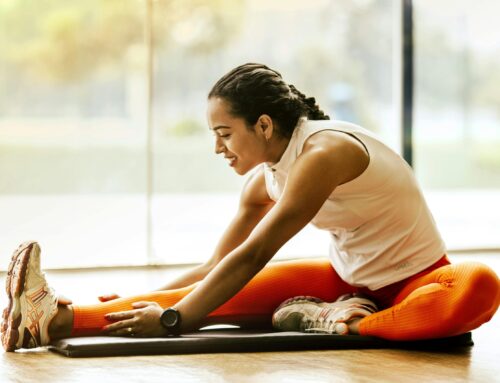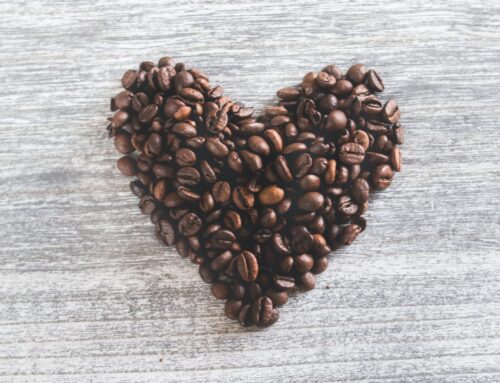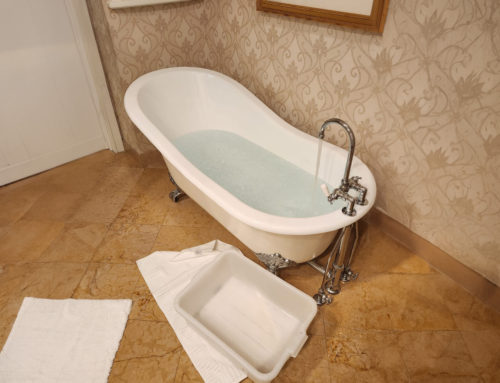Generalized anxiety disorder (GAD) is something a lot of people experience in their lifetime. While it is overwhelmingly common, it doesn’t have to be overwhelming to deal with! Let’s dive into the specifics when it comes to diagnosing anxiety, its symptoms, causes, resources, lifestyle factors, and holistic treatments.
What is anxiety?
The DSM-5 (Diagnostic and Statistical Manual of Mental Disorders, 5th edition) diagnoses anxiety by seeing if a person is experiencing three or more of the symptoms listed below for over 6 months (kids only have to show one symptom for over 6 months to be diagnosed).
What does anxiety feel like?
It is best described as worry over random everyday things for no particular reason.

Here’s a list of symptoms:
- Restlessness (trouble staying still)
- Tired easily
- Blank mind, inability to concentrate
- Unexplained body soreness
- Trouble with sleeping (falling asleep and staying asleep)
- Trouble breathing or catching breath
- Unable to relax
Sometimes, symptoms are physical like sweating, nausea, and an upset stomach. GAD is different than panic disorder or having panic attacks! This type of anxiety doesn’t present in such intense, physical reactions but looks more like someone constantly worrying all the time.
You can read more about symptoms and diagnosis here.
What is the main cause of anxiety?
Same as depression, there is no one cause for anxiety. It’s usually due to a combination of factors such as:
- Family history
- Stressful situations
- Heavy substance use
- Abuse/bullying
- Certain health conditions
Lifestyle factors can trigger GAD (like drinking alcohol or not getting enough sleep) which we’ll discuss in a second.
How can you tell if you have anxiety?
If you’re interested in self-assessing, we have a resource for you!
GAD7 – Generalized Anxiety Disorder 7

This questionnaire asks you 7 questions about the frequency of certain symptoms to help you figure out the severity of your GAD. Of course, this assessment is not an official diagnosis but can provide insight into how much your anxiety is impacting your life.
What else can trigger anxiety?
Certain habits and actions can have serious impacts. Here are some lifestyle factors to take into consideration.
Substances and Alcohol
Using drugs and alcohol will worsen your anxiety, there’s no question about it. You’ve probably experienced this already if you’ve ever gone out and had too much to drink. How did you feel the next day? While many people with anxiety use substances to ease social interactions or in other stressful settings, in the long run, substances will worsen your anxiety.
Caffeine
People who struggle with anxiety will most likely want to stay away from caffeine. Caffeine is a stimulant which means it triggers your fight or flight response. This can send you into an anxious state where you feel like your heart is racing, you’re sweaty, and you can’t catch your breath. If you love coffee, keep drinking it! Just pay attention to the way your body reacts to caffeine so you know what works best for you.
Inconsistent Sleep
Lack of good sleep can severely impact your mood and this is no different for anxiety! The trouble is people who experience anxiety often have a hard time sleeping which in turn, makes them more anxious. When you don’t get good sleep your body is more easily thrown over, making your anxiety worse. In general, you want to stick to as consistent of a sleep schedule as you can, avoid stimulants past 3 pm, exercise, and get sunlight. Sleep meditations can be helpful too!
Too Much or Too Little Exercise
People who don’t exercise often or push themselves too hard when they do exercise are more prone to experiencing anxiety. Working out can help tire out the brain and body, lessening anxiety symptoms. However, if you push yourself too hard, your body experiences similar symptoms to an anxiety attack like being out of breath and having a racing heart. To lessen anxiety, you want to aim for 45-60 minutes 3 times per week. If you don’t like cardio workouts, walking has proven to be a super-effective way to move your body!
Holistic Treatments

There are many ways to approach treating anxiety if you aren’t interested in using medication. If you read the previous blog post on depression, you’ll notice there are many similarities between the holistic treatments that work for depression and anxiety. Here are some examples:
CBT – Cognitive Behavioral Therapy
CBT helps you identify if your depression stems from one of the following negative core beliefs:
- I am a failure
- I’m not good enough
- I’m not trustworthy
- I don’t belong
- I’m unworthy
- I’m unloveable
While these core beliefs are untrue, we often repeat them to ourselves over and over again until we actually start to believe them. In order to disrupt these thought patterns, CBT helps others identify which negative thoughts they struggle with and uncover where these thoughts originate from. Once the beliefs have been uncovered they can be replaced with positive affirmations.
Grounding Exercises
These types of exercises help you get present which combats anxiety that focuses on past upset or future worry. These types of exercises include:
- Meditation
- EFT Tapping (emotional freedom technique)
- Learn more here.
- Yoga
Person-Centered Therapy
It’s what it sounds like, you’re the person being focused on! This type of therapy allows you to explore your thoughts and feeling with a counselor who reflects those thoughts back to you, so you can develop a deeper understanding of yourself.
At Solace Solutions, we use a combination of these holistic approaches while also exploring what lifestyle factors could be impacting your anxiety. Ready to step out of constant worry and gain control over your anxious thoughts?
We’re here to help you do just that! Check out our services to learn more about how we can best help you.





